Do you have a question about the Toyota 2004 4Runner and is the answer not in the manual?
Provides an overview of the vehicle's instruments and controls.
Covers operation and features related to vehicle keys and doors.
Details on various gauges, meters, and indicator lights for vehicle status.
Covers the operation of the ignition switch, automatic transmission, and parking brake.
Explains the four-wheel drive control switch knob and center differential lock switch.
Explains the multi-mode control switch knob and center differential lock switch for selecting modes.
Explains the traction control system and its automatic operation to prevent wheel spin.
Explains the vehicle stability control system and precautions for safe driving.
Covers the vehicle height control system and its different modes (HI, N, LO).
Describes the tire pressure warning system and its function in alerting about low tire pressure.
Covers the vehicle's audio system, including reference, usage, and remote controls.
Covers the vehicle's air conditioning system, including controls and settings.
Covers various other equipment and accessories in the vehicle.
Details on the multi-information display, including its buttons and information shown.
Information on operating the multi-information display, including clock and outside temperature.
Explains the cruise information display, including outside temperature, driving range, and fuel consumption.
Information on the compass system, its operation, and how to turn it on and off.
Instructions for adjusting the compass deviation by selecting the correct zone number.
Explains how the rear view monitor system assists the driver when backing up.
Information on using the 12 VDC power outlets for car accessories and their limitations.
Details on using the 115 VAC power outlet, its capacity, and precautions.
Instructions on how to open and lock the glove box.
Information on the HomeLink garage door opener and how to program it.
Programming a rolling code system and programming entrance gates or devices in Canada.
How to use auxiliary boxes, including precautions for Type A and Type B holders.
Instructions on how to open and use the rear console box.
How to use the tissue box holder located inside the rear console box lid.
How to use the coin holder located in the rear console box.
How to use the trash holder, designed for grocery bags, and its weight limit.
Information on using front cup holders, including their adjustability and indicator lights.
How to use the rear cup holders and tray by pulling out the armrest.
How to use the rear cup holders and tray, with precautions for placement of items.
How to use bottle holders and precautions to prevent spills.
How to use tie-down hooks for securing luggage and precautions.
How to use grocery bag hooks and their weight limit.
How to use cargo net hooks for securing cargo nets.
Instructions for using and removing the luggage cover, with safety precautions.
How to use the double deck, including unlocking, raising, and locking mechanisms.
How to adjust roof luggage carrier cross rails and precautions for luggage loading.
Instructions for using the correct size floor mat and fixing it with locking clips.
Crucial caution about properly placing floor mats to prevent pedal interference and accidents.
Important precautions for driving this utility vehicle off-road, focusing on rollover risks.
Tips for the initial break-in period to ensure vehicle economy and longevity.
Information on recommended unleaded gasoline, octane ratings, and fuel tank capacity.
Details on recommended octane ratings and the effects of using lower-rated gasoline.
Information on allowed oxygenate content in gasoline and recommended octane ratings.
Discourages the use of gasoline containing MMT due to potential adverse effects on the emission control system.
Guidance on what to do if gasoline quality causes driveability problems.
Explains the fuel pump shut off system's function in minimizing fuel leakage during collisions.
Advice for driving Toyota vehicles in foreign countries, including registration laws and fuel availability.
Explains the purpose of the three-way catalytic converter and precautions to prevent overheating and fire hazards.
Safety precautions regarding engine exhaust, including carbon monoxide hazards and ventilation.
Explains the primary functions of engine oil in lubricating and cooling the engine.
Discusses normal engine oil consumption and factors influencing it.
Emphasizes the importance of regularly checking engine oil levels for proper vehicle maintenance.
Information on iridium-tipped spark plugs and their care.
Details on the dual hydraulic brake circuits, brake booster, and associated warning lights.
Explains the ABS system's function in preventing wheel lock-up and providing stability during braking.
Details the ABS warning light and the associated safety systems it monitors.
Explains the VSC TRAC warning light, its causes, and automatic system resets.
Information on the drum-in-disc parking brake system and the need for periodic bedding-in.
Explains the brake assist system's function in providing supplemental braking during emergency stops.
How brake pad wear limit indicators provide a warning when pads require replacement.
Explains the function of the limited-slip center differential in transmitting driving force.
Information on the Vehicle Identification Number (VIN) and its location.
Location of the engine number stamped on the engine block.
Information about theft prevention labels designed to aid in tracing and recovery of parts.
Caution against modifying suspension/chassis with lift kits, which can affect handling.
Illustrates and explains typical tire symbols, including size, DOT number, and ply composition.
Details on the DOT symbol and Tire Identification Number (TIN) for tire compliance and tracking.
Explains tire size markings, including section width, aspect ratio, and construction code.
Diagram identifying different sections of a tire.
Explanation of uniform tire quality grading for treadwear, traction, and temperature.
Details on tire temperature grades and their resistance to heat generation.
Definitions of various tire-related terms such as accessory weight and curb weight.
Definitions of tire terms including occupant weight, rim specifications, and vehicle load limits.
Table showing occupant loading and distribution based on seating capacity.
Details on total load capacity, seating capacity, towing capacity, and cargo capacity.
Important precautions for stowing cargo and luggage to ensure vehicle balance and safety.
How cargo capacity depends on occupant weight and steps for determining correct load limits.
Examples of calculating cargo capacity with different occupant numbers and seating configurations.
Information on identifying summer tires, all-season tires, and their performance characteristics.
Covers essential steps and tips for starting and driving the vehicle safely.
Pre-driving checks, including adjusting seat, mirrors, and locking doors.
Explanation of the cranking hold function for starting the engine automatically.
Steps to take before attempting to start the engine, including parking brake and selector lever.
Normal starting procedure and what to do if the engine stalls or fails to start.
Advice for driving in different conditions, such as crosswinds, bumpy roads, and hills.
Essential precautions for driving off-road to ensure safety and prevent vehicle damage.
Tips for driving in winter conditions, including battery checks, coolant, and door lock care.
Warning against dinghy towing and precautions if it must be done.
Notice regarding not towing the vehicle with four wheels on the ground to avoid damage.
Information on trailer towing, including weight limits and the effects on vehicle handling.
Details on maximum gross trailer weight, hitch types, and weight limits for safe towing.
Information on trailer hitch weight capacities and the importance of matching them to the vehicle.
Advice on trailer hitch installation, including consulting a dealer and using recommended parts.
More on trailer hitch installation, programming rolling code systems, and Canadian market devices.
Step-by-step guide for programming devices with rolling code systems into the HomeLink.
Instructions for programming entrance gates or other devices for the Canadian market.
Steps for determining the correct trailer ball size and load rating.
How to ensure proper trailer ball height for safe trailer hookup.
Recommendations for trailer brakes, safety chains, and compliance with regulations.
Ensuring proper tire inflation and trailer tire pressure recommendations.
Details on the service connector for towing brake controllers and proper installation.
Procedure for disconnecting a trailer, especially for vehicles with rear height control air suspension.
Essential pre-towing checks for vehicle and trailer readiness and safety.
Practical tips for towing trailers, including maintaining vehicle control and handling sway.
Tips for improving fuel economy and extending vehicle life through proper driving habits and maintenance.
More tips on fuel economy, including maintaining moderate speed, proper wheel alignment, and vehicle tuning.
Guidance on handling various emergency situations with your vehicle.
Troubleshooting steps for when the vehicle will not start, including simple checks and immobilizer system issues.
What to do if the engine stalls while driving, including safety procedures and restarting instructions.
Troubleshooting steps for when the accelerator pedal does not increase engine speed.
Actions to take if the engine stalls while driving, including moving to safety and restarting.
Troubleshooting for lack of engine speed response, possibly due to electronic throttle control issues.
Procedure to follow if the engine overheats, including safety checks and coolant management.
Step-by-step guide for changing a flat tire, including safety precautions and tool usage.
Instructions for removing and installing tires and wheels, including tool usage and storage.
Detailed instructions on how to safely raise the vehicle using the jack and extensions.
Steps for removing wheel nuts, changing tires, and reinstalling wheels, including torque specifications.
How to properly position the jack at correct jack points for safe lifting.
Ensuring proper jack positioning and safety checks before raising the vehicle.
Instructions for removing wheel nuts, changing tires, and reinstalling wheels, including torque specifications.
How to reinstall wheel nuts, tighten them by hand, and then torque them after lowering the vehicle.
Instructions for safely lowering the vehicle after changing a tire.
How to reinstall the wheel ornament after changing a tire.
Final steps after changing wheels, including checking tire pressure and torque, and restowing tools.
Methods to free a stuck vehicle, including rocking it and turning off the traction control system.
Recommendations for towing your vehicle, including using Toyota dealers or commercial services.
General precautions for towing, including safety chains and abiding by laws.
Instructions for towing with a wheel lift type truck, including dolly usage and ignition key position.
Instructions for towing with a flat bed truck, including ignition key and transmission selector lever positions.
Warning against towing with sling type trucks due to potential body damage.
Instructions for emergency towing using eyelets, with extreme caution advised.
Precautions for using emergency towing eyelets, including checking for damage and proper cable attachment.
Methods for freeing a stuck vehicle, emphasizing caution with towing equipment and procedures.
How to use the shift lock override button if the selector lever is stuck in 'P'.
What to do if you lose your keys, including contacting a dealer and the possibility of immobilizer system replacement.
Actions to take if you lose your wireless remote control transmitter, including dealer contact and re-registration.
Covers methods for preventing corrosion and maintaining the vehicle's appearance.
Information on common causes of corrosion and how to protect your vehicle, especially in harsh environments.
Guidelines for regular washing to prevent paint weakness and body corrosion.
Instructions for hand-washing the vehicle, including working in the shade and using mild soap.
How to clean vinyl interiors, carpets, and seat belts, with precautions for materials and cleaning agents.
How to clean vehicle windows, with a caution for the rear window heater wires.
How to clean interior control panels and switches using a soft damp cloth.
How to clean and care for leather upholstery, including precautions against stains and sunlight.
Information on the rain clearing effect of exterior mirrors and how to maintain it.
Introduction to do-it-yourself maintenance for the vehicle.
Diagram and labels identifying major components in the engine compartment for the 1GR-FE engine.
Diagram and labels identifying major components in the engine compartment for the 2UZ-FE engine.
Illustrations showing the locations of fuse boxes in the engine compartment and instrument panel.
General safety precautions and advice for performing do-it-yourself maintenance.
Detailed safety precautions for working with batteries, fuel, engine components, and vehicle support.
Lists parts and tools required for common do-it-yourself maintenance tasks.
Instructions for checking, replacing, and identifying fuses, including emergency substitutions.
How to check and refill windshield washer fluid, including recommendations for antifreeze.
Instructions for replacing various light bulbs, including safety precautions and bulb types.
Covers maintenance procedures for the engine and chassis components.
Step-by-step guide for checking engine oil level, including hot and cold checks and adding oil.
Guidance on selecting the correct engine oil grade and viscosity based on API and ILSAC standards.
How to check the engine coolant level, add coolant, and identify potential leaks.
Information on recommended coolant types and precautions for use.
How to check the radiator and condenser for cleanliness and condition.
Procedure for checking brake fluid level and refilling, including safety precautions.
How to check the power steering fluid level and add fluid if necessary.
Information on the air conditioning filter, its replacement, and signs indicating it needs service.
Detailed instructions for removing, inspecting, cleaning, and replacing the air conditioning filter.
Importance of proper tire inflation, how to check it, and precautions for adjusting pressure.
Step-by-step procedure for checking and adjusting tire inflation pressure, including valve cap use.
How to check tire tread wear indicators, identify tire damage, and when to replace tires.
Guidelines for replacing tires, including size, construction, and load capacity recommendations.
Precautions for selecting replacement wheels, ensuring compatibility with vehicle systems.
Instructions for rotating tires to equalize wear and extend tire life, including balancing.
When to use snow tires and chains, selection criteria, and installation precautions.
Instructions and precautions for replacing wheels, including ensuring proper fit and avoiding damage.
Precautions for installing, rotating, and balancing aluminum wheels to prevent damage.
Provides technical specifications for the vehicle, including dimensions, engine, fuel, and tires.
Table detailing vehicle dimensions, weights, towing capacities, and seating configurations.
Specifications for the vehicle's engines (1GR-FE and 2UZ-FE), including type, bore, stroke, and displacement.
Information on recommended fuel type, octane rating, and fuel tank capacity.
Details on valve clearance, spark plug type, and engine oil capacity for different engines.
Information on cooling system capacity, recommended coolant types, and checking coolant level.
Specifications for the 4-speed automatic transmission, including fluid capacity and type.
Details on fluid type and change intervals for the 5-speed automatic transmission.
Specifications for the transfer case, including oil capacity and type.
Specifications for the front and rear differentials for the 1GR-FE engine.
Specifications for the front and rear differentials for the 2UZ-FE engine.
Information on lubricating propeller shafts and slide yokes.
Specifications for brake system components, including pedal clearance and wear limits.
Specifications for steering system, including free play and power steering fluid type.
Details on tire sizes, cold inflation pressures, wheel sizes, and torque specifications.
List of fuses in the engine compartment, their amperage ratings, and circuits controlled.
List of fuses in the instrument panel, their amperage ratings, and circuits controlled.
List of fuses in the engine compartment and instrument panel, their amperage ratings, and circuits.
Continuation of fuse listings for type B, including circuits for various systems.
Encourages reading Section 1-3 for understanding occupant restraint systems and potential hazards.
Explains SRS airbags and seat belts work together; emphasizes reading Section 1-3 for proper use.
Information on the new vehicle warranty coverage, including emission control systems.
Highlights the owner's responsibility for performing specified maintenance and general care.
Warnings about chemicals in vehicle exhaust, components, and battery, and precautions for handling them.
Warning about using non-genuine parts and modifications, and their potential impact on warranty and safety.
Confirms the spark ignition system meets Canadian Interference-Causing Equipment Standard.
Precautions for installing mobile radio systems to avoid interference with vehicle electronics.
Emphasizes checking tire pressure and load limits to prevent accidents due to poor handling or braking.
Safety warning about scrapping the vehicle due to explosive chemicals in SRS airbags and pretensioners.
Tips for driving on-pavement and off-road, highlighting the vehicle's utility class characteristics and rollover risks.
| Brand | Toyota |
|---|---|
| Model | 2004 4Runner |
| Category | Automobile |
| Language | English |
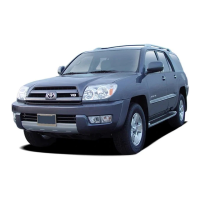
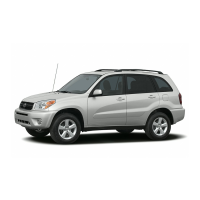

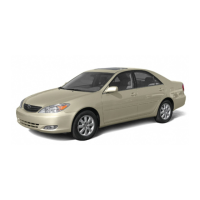
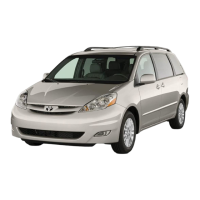

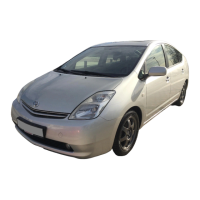
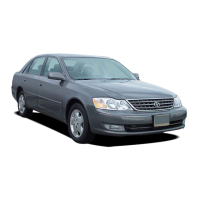
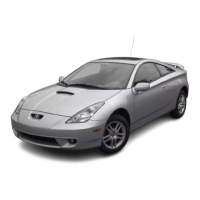
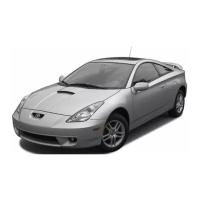
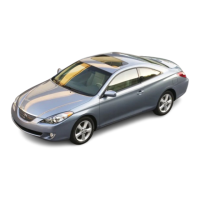
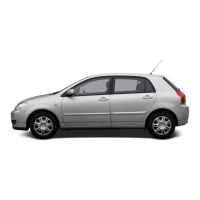
